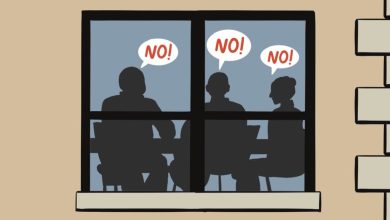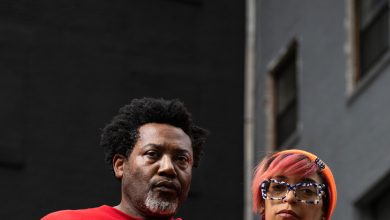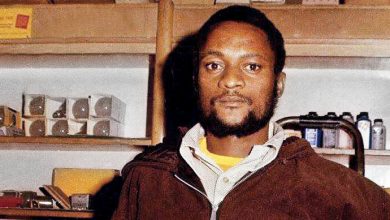Decades After the Destruction of Homeless Camps, What Have We Learned?

In many ways the modern era of class warfare in New York can be traced to a humid night in August 1988, when Tompkins Square Park erupted in violence over an effort to impose a curfew in a space that had found new distinction largely as a tent city for the homeless. Protesters screamed “Kill yuppies!” not far from the Christodora, a building that had once been a settlement house but two years earlier had been converted to luxury condominiums. Bottles were thrown, arrests were made and the police were called out for various brutalities. What was clear is that simply moving people out of the park — in 1989, with “an operation of nearly military complexity” The Times noted — would accomplish very little.
Even as tents were being dismantled on a frigid day not long before Christmas that year, a project carried out by park officers in riot helmets, the police, and a brigade of 15 trucks, occupants were planning to rebuild until, as one man put it, “they come up with a better alternative to city-run shelters.”
By the spring of 1991, the shantytown had indeed been resurrected, and officials ordered the park cleared again, this time vacating it of close to 200 people and closing it down for a $2.3 million renovation during a recession. All this did was push people toward living in empty lots where makeshift structures were then bulldozed by the city the following October.
More than 30 years later, we find ourselves in a familiar place. Although couched now in the rhetoric of dignity and compassion, the mayor’s initiative to sweep the city of tent communities has raised some of the same questions and criticisms. Begun in mid-March, the removal arrives at a time when the mayor has been making a near daily effort to market the city’s recovery, to sell the world on New York as a place of resurgent economic activity and cultural revelry.
Unlike Los Angeles, where encampments are more or less everywhere, those in New York typically exist far out of view of tourist areas, under overpasses, and away from the ultraluxury high-rises that the mayor wants to replenish with all the hedge fund managers who abandoned them early on in the pandemic for Miami or Palm Beach.
“It’s not like it’s two days before Thanksgiving,” as the former City Council speaker Christine Quinn put it, “and Snoopy has to float over the Brooklyn Navy Yard.” For several years now, she has run Win, the largest network of family shelter and supportive housing in the city and has had an intimate view of what works and what doesn’t.
“The history of homeless services has not been driven by the goal of ending homelessness,” she said. “It’s been driven by getting the topic off the cover of the paper, mostly the tabloids. That is completely faulty. But I believe Eric Adams has an opportunity to be the first mayor who embraces ending homelessness. It’s a lot of work, and in the short term it’s a lot of money. But you know we’ve spent far more on far less.” Consider, for example, that state officials have reached a deal for a new stadium for the Buffalo Bills that will require $850 million of taxpayer financing.
Three decades after the Tompkins Square riots, the housing crisis has become only more dire, while fear of the congregate shelter system has remained unchanged. Assaults and thefts are common. During the second half of last year, arrests in shelters almost doubled over the previous six months. As one homeless man explained to The New York Post recently: “I shower fully clothed.”
It is not surprising then that so many would choose seemingly more difficult alternatives. During the first 12 days of the city’s encampment-clearing plan — a period during which 239 makeshift residences were struck down — only five people agreed to go into shelters, even as temperatures plummeted to frigid levels this past week.
Most of those living in encampments are adult men and it is this population that the city has had the least success trying to house. Over the past decade, as the rate of family homelessness has shown a slight decline, the number of single men in the shelter system has roughly doubled to more than 14,000. Part of the problem is pushback from communities who are especially averse to the notion of men’s shelters when the city tries to develop them.
Another issue is an inadequate plan for those coming out of jails and prisons. The criminal justice system has moved toward decarceration, but people coming out of custody are almost 10 times more likely to experience homelessness. Two years ago, I spoke with a man who was stuck in a Brooklyn shelter, where he had been remanded after a technical parole violation, even though he had a girlfriend (and young daughter) with an apartment in Queens who wanted him home. His experience was so awful that he told his parole officer he was leaving the shelter and that she could send him back to Rikers if she wanted, because jail was preferable.
People are often hesitant to acknowledge the connection between homelessness and prison, Lincoln Restler, a city councilman in Brooklyn, told me. “They don’t want to create stereotypes or fear about the homeless,” he said. “But the state government is failing people coming out of prison.”
One of the encampments removed this week was on a stretch of Meeker Avenue, underneath the Brooklyn-Queens Expressway in Mr. Restler’s district, where images soon surfaced of mattresses and other things being thrown into the backs of garbage trucks. “When there’s a tornado, Anderson Cooper searches through the rubble with someone to find a family memento,” Ms. Quinn remarked. “That trauma of having things taken from you and thrown away is not going to drive you into service. It’s going to frighten you.”
Benjamim Adam, a volunteer coordinator for North Brooklyn Essentials, a group that distributes food, clothing and other resources to people living in encampments under the expressway, said that many who were staying there were Spanish-speaking day laborers working in construction. They relied on outreach workers for food, batteries, MetroCards, over-the-counter medications and so on, and Mr. Adam said he believed that they would rebuild.
The path forward will rely on the city’s ability to renovate or construct buildings big enough to accommodate individual rooms and bathrooms, recreation space and services for those struggling with issues around mental-health or addiction, where they may live until they can transfer to permanent housing. While Mayor Adams stressed in a news conference on Wednesday that all people deserved to live with the dignity tents and other makeshift structures could not provide, and that supportive housing was crucial, his preliminary budget for the upcoming fiscal year does not increase capital allocations to the city’s office of Housing Preservation and Development. The city he envisions is still far in the distance.





